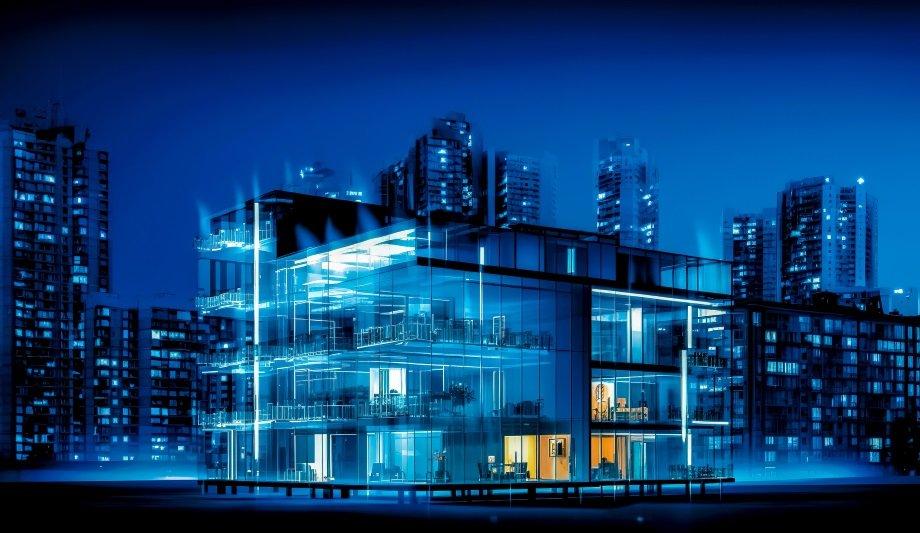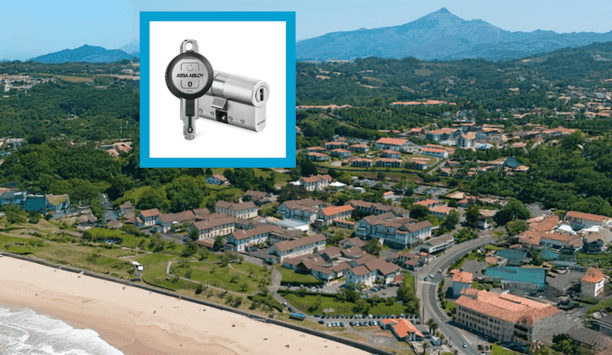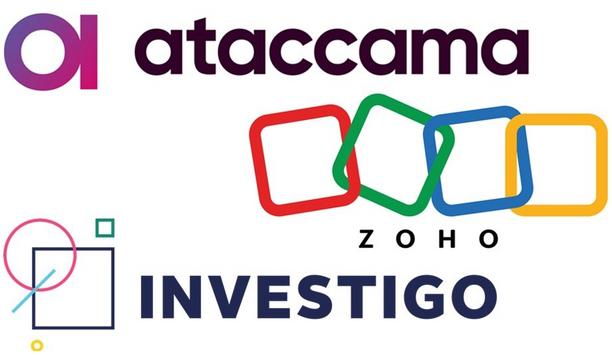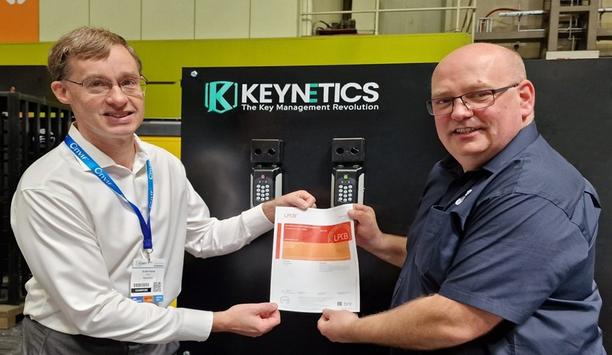The European Parliament has plenary voted in favor of the Energy Performance of Buildings Directive (EPBD) recently. This is a major step towards decarbonization of the building stock.
However, the new directive also creates fire safety and security challenges. Euralarm proposes a planned and holistic approach of these topics.
European building stock
A large majority of the buildings in the European Union, about 85%, were constructed prior to 2000. Within this group, 75% are categorized as having inadequate energy performance. Enhancing the energy efficiency of these buildings is essential for energy conservation and crucial to attaining a zero-emission, fully decarbonized building stock by 2050 .
Depending on the member state, only 0.4-1.2% of the building stock is renovated each year
Depending on the member state, only 0.4-1.2% of the building stock is renovated each year. These figures allow a lot of room for improvement, not only in energy efficiency but also in economic growth. Renovation and retrofit work on existing buildings add almost twice as much value as the construction of new buildings.
SMEs contribute to more than 70% of the value added in the EU building sector. Building corporations, as well as project developers are main drivers for renovating existing buildings, since their economy of scale makes it financially more interesting to invest in renovations.
Energy Performance of Buildings Directive
To boost the energy performance of buildings, the EU has established a legislative framework that includes the Energy Performance of Buildings Directive EU/2010/31 and the Energy Efficiency Directive EU/2023/1791, both revised in 2023. Together, the directives promote policies that will help achieve a highly energy efficient and decarbonised building stock by 2050 while creating a stable environment for investment decisions. It will enable consumers and businesses to make more informed choices to save energy and money.
The Energy Performance of Buildings Directive (EPBD) includes an enhanced standard for new buildings, including a more ambitious vision for buildings to be zero-emission. For existing buildings enhanced long-term renovation strategies are included, to be renamed national Building Renovation Plans.
Also, deep renovation is introduced, as well as building renovation passports. Deep renovation is a process of capturing, in one or, when not possible, a few steps, the full potential of a building to reduce its energy demand, based on its typology and climatic zone.
Elevated fire risks
To attain fully decarbonized buildings further electrification is necessary. The electrification of buildings and society involves the integration of new technologies into buildings, which can increase the risk of fire. The increased risk is caused by:
- Increased Electrical Loads: Electrification of heating and transport systems (like heat pumps and electric vehicles) increases the electrical loads in buildings. This can lead to higher fire risks if existing electrical infrastructures are not adequately upgraded to handle the increased demand.
- Material Storage for Energy Systems: The storage of materials like hydrogen or other fuels for clean energy systems poses inherent fire risks due to the combustible nature of these substances.
- Electrical Systems: In the push towards energy savings, older buildings with aging electrical systems may be more susceptible to fires due to the added strain of new, more power-intensive appliances and systems.
- Installation of New Technologies: The installation of new technologies necessary for the Green Deal, such as solar panels and battery storage systems, introduces new fire risks, especially if improperly installed or maintained.
- Insulation Materials: To achieve energy efficiency, buildings are often retrofitted with new insulation materials. Some of these materials can be highly flammable or emit toxic fumes when burning, increasing fire risk and potential harm during a fire.
- Ventilation Systems: Enhanced insulation and energy-efficient buildings require improved ventilation systems to manage air quality and moisture. Faults in these systems can potentially increase fire risks or spread smoke and toxins more rapidly in the event of a fire.
These increased risks require significant changes in fire safety and security measures in and around buildings. Understanding and mitigating these increased fire risks are crucial for safely transitioning to more energy-efficient and electrified buildings under the Green Deal framework.
Sustainably generated energy
This last item requires buildings among others to use as little energy as possible
The EPBD includes an enhanced standard for new buildings, including new buildings to be fit to host solar installations (where technically and economically feasible) and a more ambitious vision for buildings to be zero-emission.
This last item requires buildings among others to use as little energy as possible and to use sustainably generated energy. This can be achieved by adding more and advanced insulation materials.
Increase of fire loads of buildings
Combined with the growing number of electronic and electrical devices in buildings, (e.g., energy storage as part of the energy efficiency measures), the increase of fire loads of buildings will continue and must be considered in the overall fire safety concept and infrastructure.
According to Article 7 of the new EPBD Member States shall address, in relation to new buildings, the issues of optimal indoor environmental quality, adaptation to climate change, fire safety, risks related to intense seismic activity and accessibility for persons with disabilities.
Improving energy performance
Euralarm advises regular fire safety reviews to be carried out by certified professionals. Article 26 of the EPBD even states that Member States shall ensure that guidance and training, including for under-represented groups, are made available, for those responsible for implementing the EPBD.
Euralarm advises regular fire safety reviews to be carried out by certified professionals
Such guidance and training shall address the importance of improving energy performance and shall enable consideration of the optimal combination of improvements in energy efficiency, reduction of greenhouse gas emissions, use of energy from renewable sources and use of district heating and cooling when planning, designing, building, and renovating industrial or residential areas. Fire safety could also be included in this guidance and training.
Existing building stock
Buildings that need to undergo a major renovation to improve the energy efficiency are also mentioned in the EPBD. It includes a proposal to gradual phase-out stand-alone boilers powered by fossil fuels, starting with the end of subsidies to such boilers from 1 January 2025. This goes hand in hand with the modernisation of buildings and their systems and better energy system integration for heating, cooling, ventilation, charging of electric vehicles and renewable energy.
Also, one-stop-shops are available in most countries for the energy renovations of buildings for homeowners, small and medium-sized enterprises, and other stakeholders. This initiative should make it easier for them to join the ‘renovation wave’.
According to article 8 of the EPBD Member States shall encourage, in relation to buildings undergoing major renovation, high-efficiency alternative systems, in so far as that is technically, functionally, and economically feasible. Member States shall address, in relation to buildings undergoing major renovation, several issues among which fire safety.
Proactively engage in energy efficiency initiatives
It will also raise the awareness with policy makers, building owners and end users
With fire safety being mentioned and referred to on several places in the EPBD Member States should take fire safety into account in the building directive. Euralarm urges all national fire associations within the Member States to proactively engage with their respective local governments to assist and provide expertise in activities related to building renovations and fire safety.
Their involvement is crucial in shaping policies and practices that ensure the fire safety and security of our communities in the living and work environment. It will also raise the awareness with policy makers, building owners and end users.
As local fire safety experts, the knowledge and experience of local associations, installers and fire safety specialists are invaluable in guiding building renovations to meet both current and emerging fire safety standards. Euralarm encourages them to reach out to the local authorities and help, ensuring that fire safety is a central consideration in all building (renovation) projects.
One stop shops as driver for fire safety
The concept of a "one-stop shop" as presented in the EPBD refers to a streamlined, accessible platform or service that simplifies the process for building owners and stakeholders to comply with the requirements of the EPBD.
This approach is designed to facilitate the renovation and energy performance enhancement of buildings across the European Union. The one stop shop approach is already implemented in several Member States.
It is expected to cover 5-6% of the renovation volume of 35 million buildings in 2030 set out by the Renovation Wave Strategy at low social costs, integrating private investments with client-friendly methods. The current level of activity of the European one stop shop market is estimated to be around 100 000 projects per year.
Improving energy efficiency
The primary purpose of the one-stop shop is to provide comprehensive support and guidance
The primary purpose of the one-stop shop is to provide comprehensive support and guidance for building renovations, particularly focusing on improving energy efficiency and sustainability. It also provides technical assistance, from the planning and design phases through to the implementation of renovation works.
It facilitates coordination among various stakeholders involved in building renovations, including architects, builders, energy consultants, and local authorities. The one stop shop can also be a route to provide information about fire safety in relation to building renovation.
The active participation of fire safety experts and companies in local activities can make a significant difference in integrating advanced fire safety measures during the renovation and into local building codes, ultimately leading to safer living and working environments. By collaborating closely with government officials and being involved from the outset, they can help steer the direction of regulatory frameworks and enforcement practices concerning fire safety.
Euralarm holistic approach
When getting engaged in either of the energy efficiency initiatives Euralarm proposes to follow a holistic approach. First, the building structure and its contents must be considered as to how they contribute to the overall fire load, as well as how they can hinder and restrain a fire event.
Considering the building and its contents as a system allows authorities, fire safety engineers and building owners to oversee the impact of changes on the fire safety.
Fire safety engineers and building owners to oversee the impact of changes on the fire safety
It would then also enable the responsible persons, i.e., authorities or building owners, to optimize or fully maximize the use of technical means to provide early detection and evacuation of the building. The early detection and warning could be coupled with systems for extinguishing fires, managing smoke and heat as well as guidance systems to bring occupants into safety.
Fire Safety Systems
An organizational plan should be made with an overall view on the building including infrastructure, its intended use and occupancy, and systems in place for detection and management of fires. This plan should identify what is to be done in the event of a fire and who is responsible to initiate and execute which measures.
The introduction of a holistic approach towards fire safety requires qualified people and companies who can define the fire safety concept. The required level of qualification not only counts for the definition phase but also for the design, installation, commission, and maintenance phase.
Following this approach should lead to systems that are in line with the EN 16763 Services Standard for Fire Safety Systems and Security Systems. Together, we can work towards a safer, more resilient built environment across all member states.
From facial recognition to LiDAR, explore the innovations redefining gaming surveillance

























